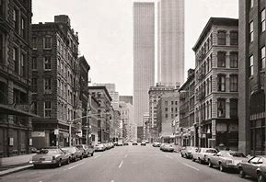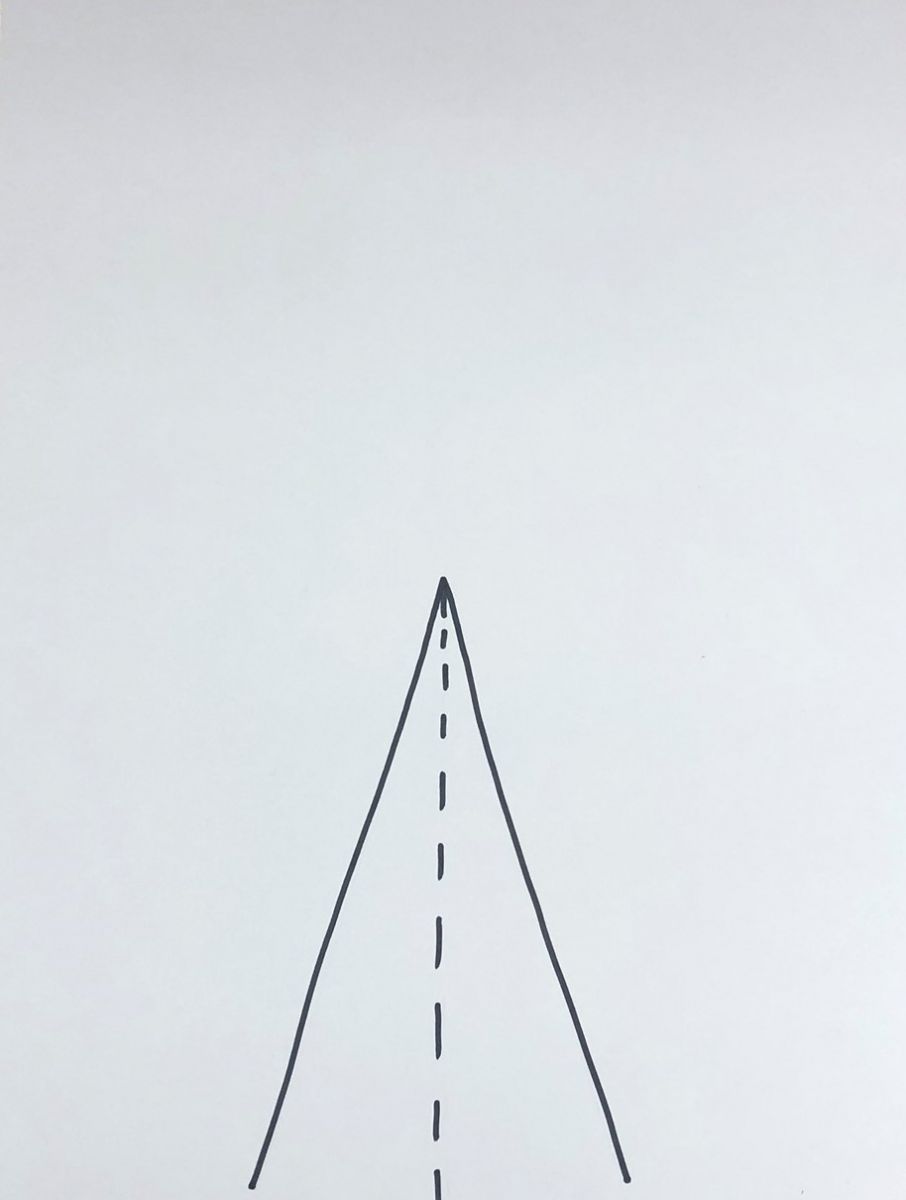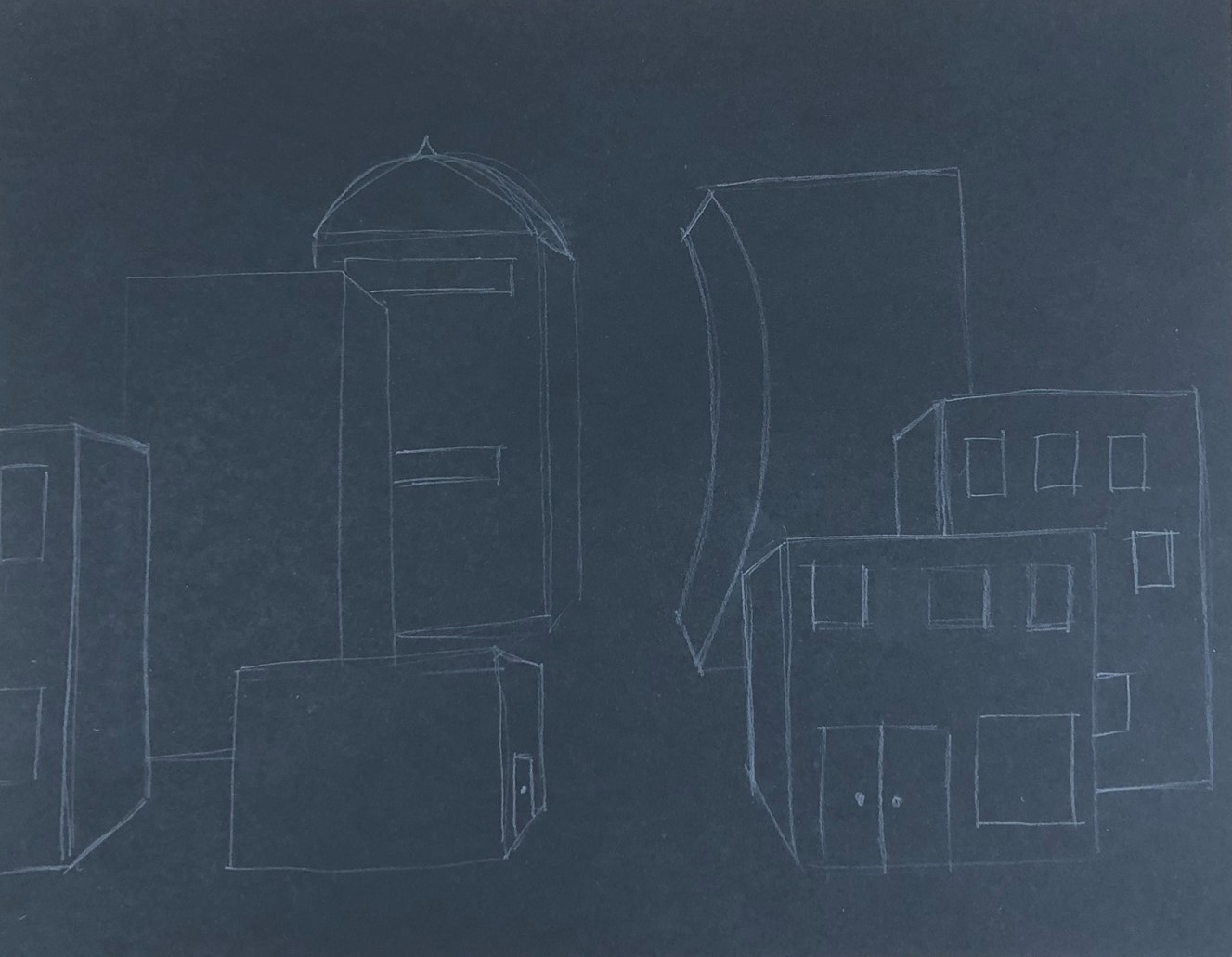Students will learn how to draw objects in 1-point perspective using rulers to draw vertical, horizontal & diagonal lines. Recommended for 4th Graders
Form: 3-dimensional object that has height, length and width.
Line: Mark between two points
Shape: a 2-dimensional (flat) area enclosed by a line (geometric or organic).
Space: The area between and around objects. In visual art it is the illusion of depth.
Balance: the distribution of the visual weight of objects
Contrast: the difference between elements in a composition such that areas of contrast attract the viewer’s eye.
Pattern: the repetition of an element throughout the work of art
Rhythm: created by movement implied through repetition of elements in a non-uniform but organized way. Unlike pattern, which demands consistency, rhythm relies on variety.
Background: the area around the objects.
Cityscape: a picture of a city.
Depth: the 3rd dimension that is missing from a shape but present in a form, and it’s the apparent distance from front to back or near-to-far in a 2-dimensional flat artwork.
Diagonal: moving in an angled direction.
Horizontal: moving in a side-to-side direction, in alignment with the horizon.
Perspective: a technique (way of doing something) used to create the illusion of depth.
Vertical: moving in an up-&-down direction.
Class set of rulers
Vincent Van Gogh’s “The Starry Night” painting may offer inspiration for a background sky.

View images and discuss the way objects appear to shrink as they are farther away from the viewer.
Point out the way geometric buildings are bound by horizontal and vertical edges on the walls facing us, but the tops (& bottoms) of the buildings are diagonal on the walls ‘going away’ from us, because they are ‘shrinking’ as they travel back.
Point out the way windows on a receding wall also have diagonal edges on the tops & bottoms, but not on the sides—these remain vertical, like the walls.
Remind them that forms are just 3-d shapes, and when we draw them using perspective (point of view) we create the illusion of form & depth.
Students will use 1-point perspective (using vertical, horizontal & diagonal lines to depict receding or facing surfaces). They will use rulers to create straight lines & patterns of windows. They will make individual choices about what kind of sky to draw in their backgrounds.
Set-up: Draw an upside -down V on the white board.
Add a vertical dotted line from the base to where the lines of the V meet.

Ask them what this looks like to them. They usually see it 2-dimensionally. When you explain this is a road, & it’s an illusion of depth, you can remind them that things appear to shrink as they recede into the background.
Write the 3 dimensions on the board: height, width & depth. Point out these 3 dimensions on a nearby object, such as a chair or a student.

Next, draw a line free hand, then draw one with a ruler: ask them which one looks straighter.



Lesson written by Cynthia Moring. How To Teach Art To Children. Even Moor, 2001.
21st Century Thinking Skills
Observing, sequencing, problem solving, persisting.
WA State Learning Standards
(VA:Cr1.1.4) a. Brainstorm multiple approaches to a creative art or design problem. When deciding on what to include in the sky, what shape roof for buildings.
(VA:Cr2.1.4) a. Explore and invent art-making techniques and approaches. When studying one-point perspective.
(VA:Cr2.3.4) a. Document, describe, and represent regional constructed environments.
(VA:Cr3.1.4) a. Revise artwork in progress on the basis of insights gained through peer discussion. This is achieved as you make comments on what students have chosen to depict in their skies and building details.
(VA:Re9.1.4) a. Apply one set of criteria to evaluate more than one work of art. This happens when you reflect if students learned the objectives of the lesson.
(VA:Cn10.1.4) a. Create works of art that reflect community cultural traditions. This happens if community and culture is revealed in detail.
(VA:Cn11.1.4) a. Through observation, infer information about time, place, and culture in which a work of art was created. This happens if certain known landmarks are included, such as the Seattle Space Needle.
Arts Integration Opportunities
Vocabulary words can be included in spelling lists.
Social studies lessons can incorporate 1-point perspective illustrations of towns, dwellings, landmarks being studied. Eg. Log cabins, pyramids.
Please note: These lesson plans are intended for non-profit use only. Use of these plans for commercial purposes should give attribution to the Issaquah Schools Foundation and be accompanied by a nominal donation at www.isfdn.org/donate. Thank you.
Fueling Success for Every Student, Every School